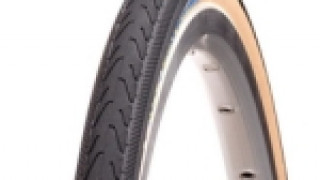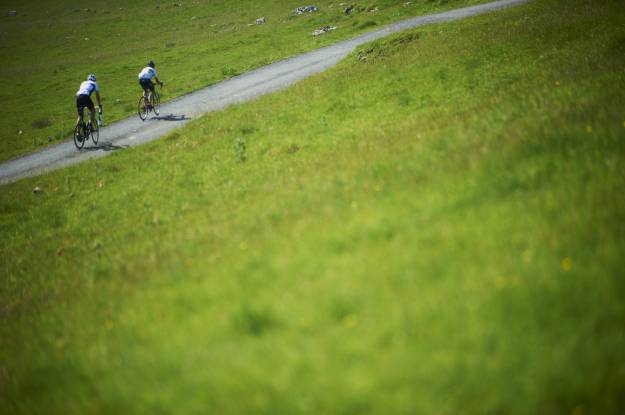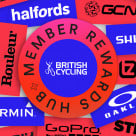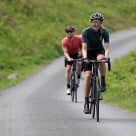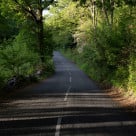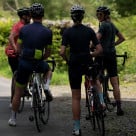 Rubber is good. Especially when it's between you and the tarmac. Ever since the nice Mr Dunlop invented the pneumatic tyre, cycling as we know it has been possible. Despite over 100 years of research and development and product refinement, it's still within our hands to monumentally screw things up.
Rubber is good. Especially when it's between you and the tarmac. Ever since the nice Mr Dunlop invented the pneumatic tyre, cycling as we know it has been possible. Despite over 100 years of research and development and product refinement, it's still within our hands to monumentally screw things up.
- MTB On the Road? Ditch those knobbles! How many cyclists do you see riding to work on 2.3 inch knobbly mountain bike tyres? Get a grip! You only need your knobbly tyres for loose off road surfaces. Get a set of road tyres for your mountain bike and you'll ride 2 gears higher everywhere.
- Narrower isn't always faster - Contentious this one! Most road bikes come as standard with 23mm tyres, most come with 52 tooth outer chainrings. Both of these things are pretty useless for everyday road riding. Get 25mm tyres, or 28mm if your brake and frame clearances will allow. Problem is, most modern road bikes try to flatter riders into thinking they are TdF riders and therefore have huge gears and close clearances. Fact is, close clearances on your frame won't make you faster. There's also a strong argument that narrow tyres won't make you faster either. Indeed, studies (and logic) shows that, run at the same pressure, a 28mm tyre has a shorter contact patch and has to deflect and reform less than an otherwise identical 23mm tyre. Plus it will perform better on poor road surfaces. What does this mean? For most riders a wider, but still lightweight tyre will be faster and more comfortable.
- Under pressure? if your tyres are narrow (23-28mm) you really need to keep them at the top end of their stated pressure range (handily written on the sidewall). However, if you take the Zen-like wide-tyred route to enlightenment, don't waste all their precious comfort giving properties by pumping them up rock hard. For a wider touring or commuting tyre (e.g 700x35mm) 50PSI works really well. At this kind of pressure, they'll roll fantastically on all surfaces, give great comfort but still resist pinch flats, even off road.
- Bulletproof - for city riding, look for tyres with a Kevlar anti-puncture layer in their construction. Whilst not a cast iron guarantee against the dreaded flat, they give a lot of protection.
- Folding Tyres - better quality tyres are available in a folding variety, which means that the wire bead that locates in the rim of the tyre is made of Kevlar or similar, which is slightly lighter and enables you to fold your tyre up small and take a spare with you on long journeys. They're also ridiculously easy to get on and off, generally speaking.
- Mixed Up? If you do a lot of riding on mixed surfaces - e.g tarmac, towpaths and trails, look for a tyre with a smooth central section and pronounced knobbles on the outer edge - this will run smooth on tarmac but give you plenty of grip when cornering on loose surfaces.
- Size Matters - Tyre Sizing is a nightmare, with at least three different 'standards' to look out for. I'd go into it here, but there's no point in reinventing the wheel (sorry), and the late great Sheldon Brown has written a superb piece on it here
- Tread Carefully Some assume that tyres with no tread are going to offer no grip on the road or in wet weather. The fact is that 'slick' treads on bikes actually present more surface area on smooth surfaces, which means more grip. Even in the wet a smoother tread will mean more grip on the road than a deep tread or knobbles. Cars need tread, or grooves in the tyre to prevent them hydroplaning above a certain speed (hydroplaning is where the tyre can't shed the water between it and the surface, effectively leaving contact with the ground) however you'd have to be riding at around 100mph on average bike tyres for this to begin to happen. The only time where you need a pronounced tread on your tyre is when it needs to bite into a soft surface, such as mud or sand.
- Losing your Direction? Many tyres come with a directional arrow ensuring that you orient them the correct way, with the arrow pointing in the direction of rotation. However, this only makes a real difference on aggressive off road tyres, with specific knobbles designed to hook up on climbs, during cornering and when braking. So don't fret if you've got your lightly treaded road or hybrid tyre 'the wrong way around.'


